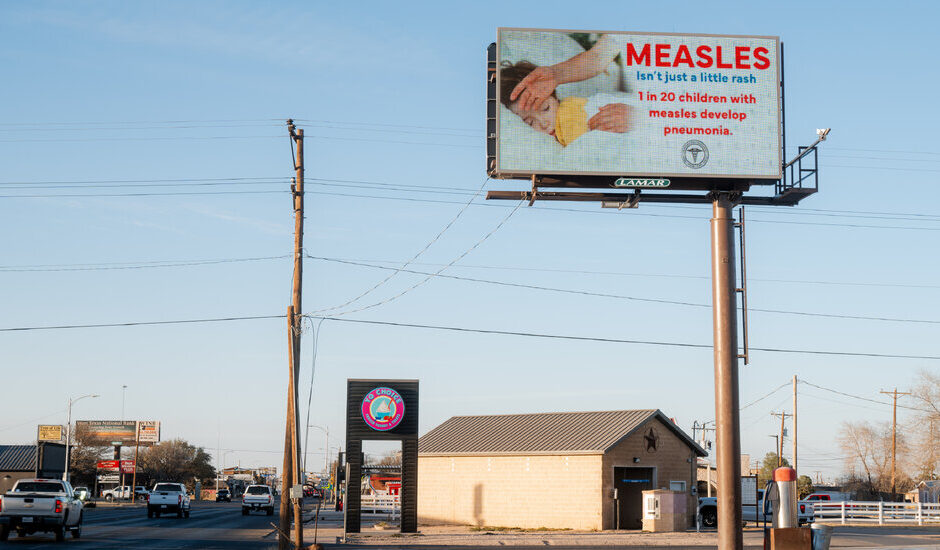The measles crisis in West Texas has claimed the life of another child, the second death in an outbreak that has burned through the region and infected dozens of residents in bordering states.
The eight-year-old girl died of “measles pulmonary failure” at a hospital in Lubbock, Texas, according to records obtained by The New York Times. It is the second confirmed measles death in a decade in the United States.
The first was an unvaccinated child who died in West Texas in February. Another unvaccinated person died in New Mexico after testing positive for measles, though officials have not yet confirmed that measles was the cause of death.
A Trump administration official said on Saturday night that the girl’s cause of death is “still being looked at.”
Since late January, when the outbreak began, West Texas has reported 480 cases of measles and 56 hospitalizations. The outbreak has also spread to bordering states, sickening 54 people in New Mexico and 10 in Oklahoma.
If the virus continues to spread at this pace, the country risks losing its measles elimination status, a hard fought victory earned in 2000. Public health officials in West Texas have predicted the outbreak will continue for a year.
Robert F. Kennedy, the nation’s health secretary, has faced intense criticism for his handling of the outbreak. A prominent vaccine skeptic, he has offered muted support for vaccination and has emphasized untested treatments for measles, like cod liver oil.
According to doctors in Texas, his endorsement of alternative treatments has contributed to patients delaying critical care and ingesting toxic levels of vitamin A.
Experts also fear that Trump administration’s recent decisions to dismantle international public health safeguards and pull funding from local health departments have made large, multistate outbreaks more likely.
Measles is one of the most contiguous pathogens. The virus can linger in the air for up to two hours after an infected person has left the room and spreads when a sick person breathes, coughs or sneezes.
Within a week or two of being exposed, those who are infected may develop a high fever, cough, runny nose and red, watery eyes. Within a few days, a telltale rash breaks out as flat, red spots on the face and then spreads down the neck and torso to the rest of the body.
In most cases, these symptoms resolve in a few weeks. But in rare cases, the virus causes pneumonia, making it difficult for patients, but especially children, to get oxygen into their lungs.
It may also cause brain swelling, which can leave lasting problems, like blindness, deafness and intellectual disabilities.
For every 1,000 children who get measles, one or two will die, according to the Centers for Disease Control and Prevention. The virus also harms the body’s immune defenses, leaving it vulnerable to other pathogens.
Christina Jewett contributed reporting.
#Child #Dies #Measles #Texas


